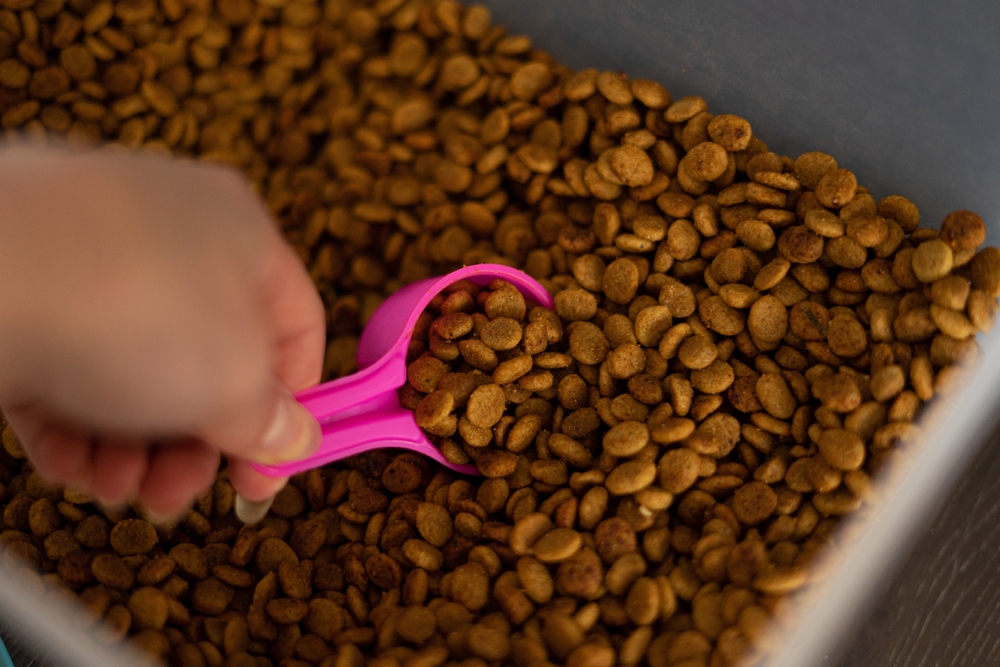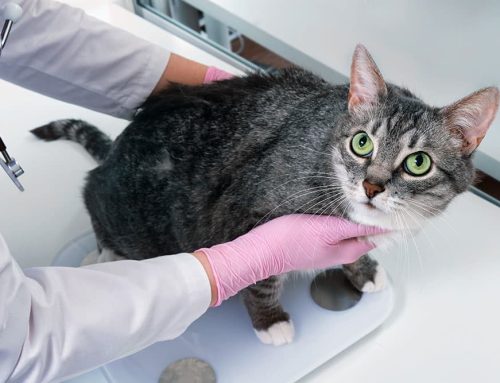Reading pet food labels can be a maze of confusing terminology and obscure ingredients, leaving you wondering how to interpret them. Learning about these labels is crucial for ensuring your furry friend gets the nutrition they need. Our Mobile Cat & Dog Vet team breaks down pet food labels’ essential components, empowering you to make informed decisions about your pet’s diet.
Pet food standards
The Association of American Feed Control Officials (AAFCO) sets livestock feed and pet food standards. AAFCO determines if pet food is “complete and balanced,” meaning the food is nutritionally adequate based on a pet’s life stage. For example, pet food for puppies must meet AAFCO’s guidelines for what’s nutritionally adequate for their life stage. However, keep in mind that AAFCO only requires adequacy, not optimal quality. Your primary care veterinarian is your best source to provide nutritional guidance for your pet.
Pet food ingredients list
The ingredients list is a pet food label’s most critical component. The ingredients are often placed near the label’s top, which lists everything in the food in decreasing order of the amount. The top three ingredients indicate the quality of your pet’s diet because these ingredients are most abundant. While reading through the list, ensure the ingredients are recognizable and include high-quality protein, including:
- Chicken
- Beef
- Salmon or other fish
- Duck
- Wild boar or game meat
- Lamb
If “meal” or “meat by-products” are listed as being the food’s protein source, organ meats, such as the intestines, gizzards, and other organ meat, are the most abundant protein source in the food. While these meat products may not sound tasty to you, the AAFCO standards deem them adequate. Debate continues about whether animal byproducts are as healthy as whole meat, so you should discuss this with your veterinarian.
Guaranteed analysis for pet food
This analysis outlines a pet food’s minimum and maximum critical nutrient levels, including protein, fat, fiber, and moisture. The term “crude” in a guaranteed analysis refers to the method used to determine the pet food’s nutrient content. “Crude” does not relate to an ingredient’s quality but rather the measurement. Protein content is determined by analyzing nitrogen levels, and fat content is determined by analyzing lipids present. Pay attention to the protein and fat content, which are crucial for your pet’s energy and overall health. Remember that the guaranteed analysis is based on an as-fed basis, so you may need to adjust for moisture content when comparing various pet food diets.
Pet food nutritional adequacy statement
The AAFCO statement, or nutritional adequacy statement, indicates whether the pet food is formulated to meet AAFCO’s established nutritional requirements. Look for phrases, such as “complete and balanced” or “meets AAFCO nutrient profiles,” to ensure the food provides adequate nutrition for your pet’s life stage.
Pet food for the appropriate life stage
Pet food manufacturers base their food formulas on meeting dogs’ or cats’ nutritional needs at various life stages. Puppies and kittens require additional vitamins, minerals, and other nutrients to support their rapid growth. In contrast, adult and older cats and dogs require food tailored to their life stage. Specialty diets meet the specific needs of certain breeds or health conditions, including low-calorie for weight management, and sensitive stomach formulas. Choose a food that aligns with your pet’s age, activity level, and any specific health concerns they may have. Consult with your veterinarian to determine the correct diet for your furry friend.
Pet food feeding instructions

Feeding your pet the correct amount of food each day is critical to maintaining their healthy weight. Feeding instructions on a pet food’s label recommend the amount to feed your cat or dog based on their weight, life stage, and activity level. Remember, these are general guidelines, and individual pets may require more or less food depending on factors such as their metabolism, underlying health conditions, and exercise. Talk with your veterinarian about the appropriate amount to feed your pet daily.
Deciphering pet food labels empowers you to make informed choices about your pet’s nutrition and overall vitality. Your primary care veterinarian can advise you on keeping your pet in excellent shape through the power of nutrition. If your pet needs palliative or hospice care, call our Mobile Cat & Dog Vet to schedule a consultation.








Leave A Comment